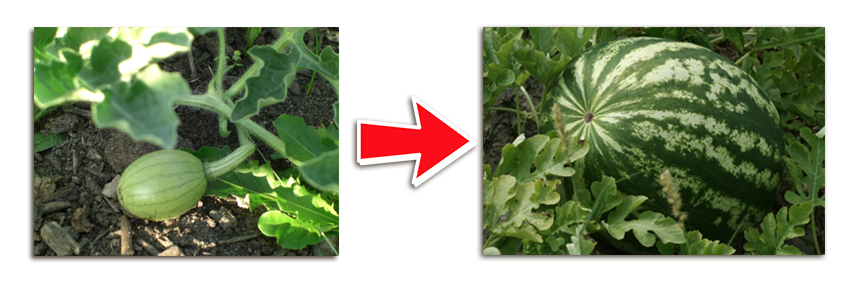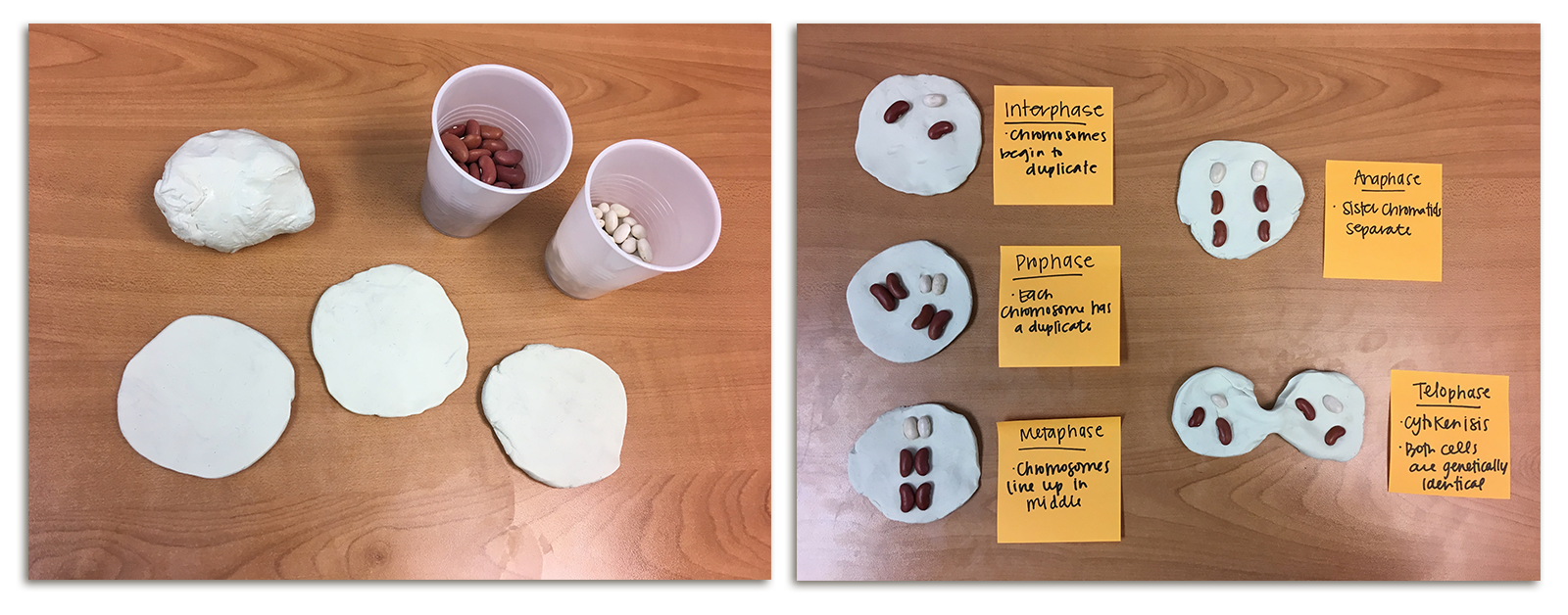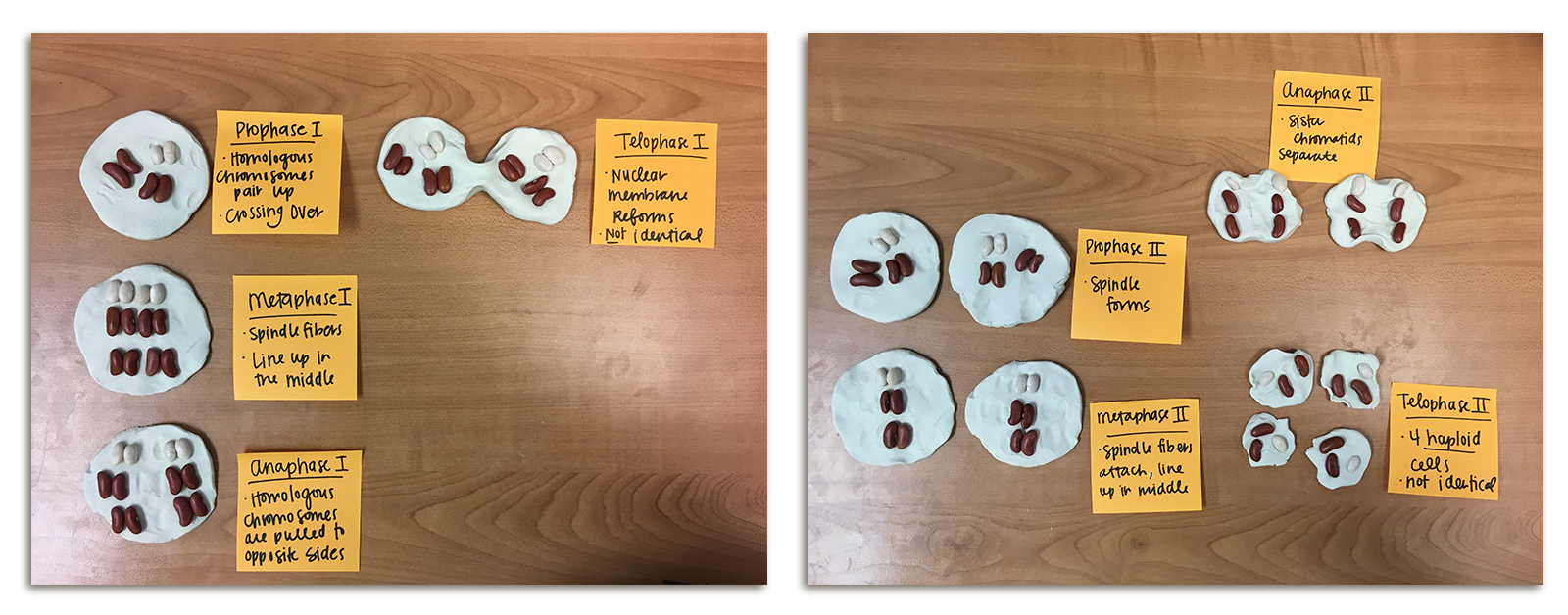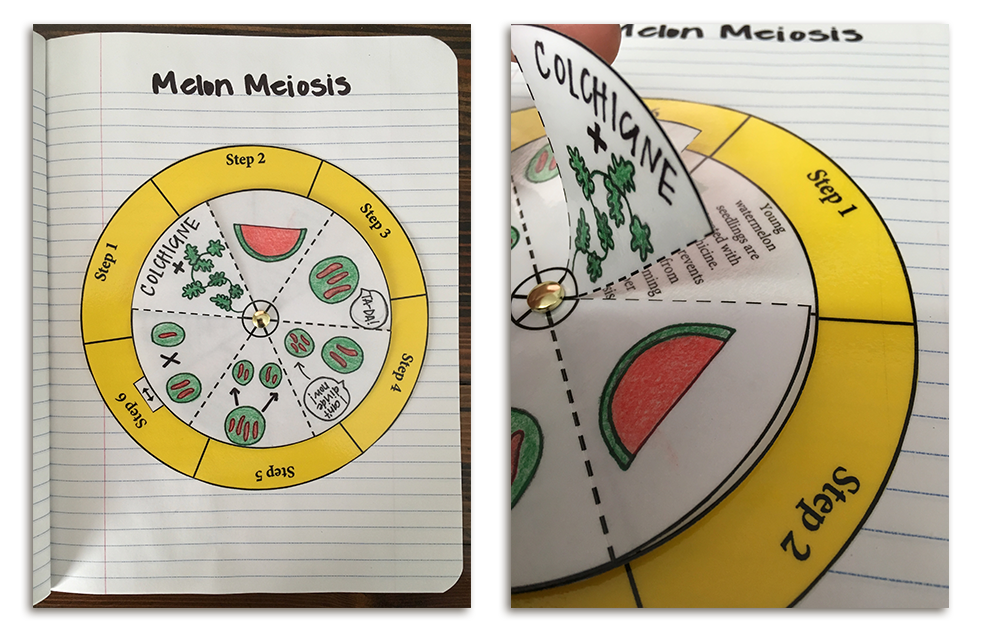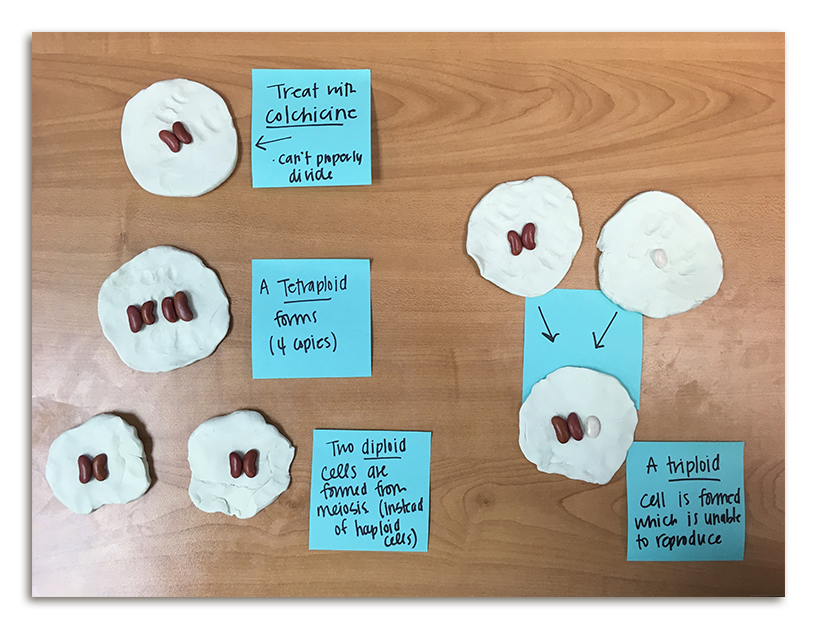Melons, Mitosis, and Meiosis
Students apply the steps of mitosis and meiosis to learn about the production of both seeded and seedless watermelon. Students will learn about the discovery of colchicine, which made seedless watermelon possible and use modeling clay and beans to model meiosis and mitosis.

Background
Lesson Activities
Recommended Companion Resources
Credits
Author
Andrea Gardner and Bekka Israelsen | Utah Agriculture in the Classroom and National Center for Agricultural Literacy (NCAL)
Acknowledgements
This lesson was adapted from the lesson, Melon Meiosis, written by Oklahoma Agriculture in the Classroom
Standards
Texas Content Area Standards
-
World Geography Studies: 113.43.d.21
Social studies skills. The student applies critical-thinking skills to organize and use information acquired through established research methodologies from a variety of valid sources, including technology. The student is expected to:
- World Geography Studies: 113.43.d.21.F: formulate and communicate visually, orally, or in writing a claim supported by evidence and reasoning for an intended audience and purpose
-
Economics with Emphasis on the Free Enterprise System and Its Benefits: 113.31.d.21
Social studies skills. The student applies critical-thinking skills to organize and use information acquired through established research methodologies from a variety of valid sources, including technology. The student is expected to:
- Economics with Emphasis on the Free Enterprise System and Its Benefits: 113.31.d.21.F: formulate and communicate visually, orally, or in writing a claim supported by evidence and reasoning for an intended audience and purpose
-
English I: 110.36.c.1
Developing and sustaining foundational language skills: listening, speaking, discussion, and thinking--oral language. The student develops oral language through listening, speaking, and discussion.
- English I: 110.36.c.1.D: participate collaboratively, building on the ideas of others, contributing relevant information, developing a plan for consensus building, and setting ground rules for decision making
-
English II: 110.37.c.1
Developing and sustaining foundation language skills: listening, speaking, discussion, and thinking--oral language. The student develops oral language through listening, speaking, and discussion.
- English II: 110.37.c.1.D: participate collaboratively, building on the ideas of others, contributing relevant information, developing a plan for consensus building, and setting ground rules for decision making
-
English III: 110.38.c.1
Developing and sustaining foundational language skills: listening, speaking, discussion, and thinking--oral language. The student develops oral language through listening, speaking, and discussion.
- English III: 110.38.c.1.D: participate collaboratively, offering ideas or judgments that are purposeful in moving the team toward goals, asking relevant and insightful questions, tolerating a range of positions and ambiguity in decision making, and evaluating the work of the group based on agreed-upon criteria
-
English IV: 110.39.c.1
Developing and sustaining foundational language skills: listening, speaking, discussion, and thinking--oral language. The student develops oral language through listening, speaking, and discussion.
- English IV: 110.39.c.1.D: participate collaboratively, offering ideas or judgments that are purposeful in moving the team toward goals, asking relevant and insightful questions, tolerating a range of positions and ambiguity in decision making, and evaluating the work of the group based on agreed-upon criteria
-
Advanced Plant and Soil Science: 130.25.c.1
The student demonstrates professional standards/employability skills as required by business and industry. The student is expected to:
- Advanced Plant and Soil Science: 130.25.c.1.B: apply competencies related to resources, information, interpersonal skills, and systems of operation in plant systems.
-
World History Studies: 113.42.d.28
Social studies skills. The student understands how historians use historiography to interpret the past and applies critical-thinking skills to organize and use information acquired from a variety of valid sources, including technology. The student is expected to:
- World History Studies: 113.42.d.28.F: formulate and communicate visually, orally, or in writing a claim supported by evidence and reasoning for an intended audience and purpose
-
Advanced Plant and Soil Science: 130.25.c.17
The student diagrams the structure and function of nucleic acids in the mechanism of genetics. The student is expected to:
- Advanced Plant and Soil Science: 130.25.c.17.A: describe components of deoxyribonucleic acid (DNA) and illustrate how information for specifying the traits of an organism is carried in DNA.
- Advanced Plant and Soil Science: 130.25.c.17.B: identify and illustrate how changes in DNA cause phenotypic or genotypic changes.
- Advanced Plant and Soil Science: 130.25.c.17.C: compare and contrast genetic variations observed in plants and animals.
- Advanced Plant and Soil Science: 130.25.c.17.D: compare the processes of mitosis and meiosis and their significance.
-
Advanced Plant and Soil Science: 130.25.c.18
The student demonstrates skills related to the human, scientific, and technological dimensions of crop production and the resources necessary for producing domesticated plants. The student is expected to:
- Advanced Plant and Soil Science: 130.25.c.18.A: describe the growth and development of major crops.
- Advanced Plant and Soil Science: 130.25.c.18.B: apply principles of genetics and plant breeding.
- Advanced Plant and Soil Science: 130.25.c.18.C: examine the development of crop varieties through the origin of agriculture.
-
Biology: 112.42.c.1
Scientific and engineering practices. The student, for at least 40% of instructional time, asks questions, identifies problems, and plans and safely conducts classroom, laboratory, and field investigations to answer questions, explain phenomena, or design solutions using appropriate tools and models. The student is expected to:
- Biology: 112.42.c.1.A: ask questions and define problems based on observations or information from text, phenomena, models, or investigations
- Biology: 112.42.c.1.E: collect quantitative data using the International System of Units (SI) and qualitative data as evidence
- Biology: 112.42.c.1.F: organize quantitative and qualitative data using scatter plots, line graphs, bar graphs, charts, data tables, digital tools, diagrams, scientific drawings, and student-prepared models
-
Biology: 112.42.c.6
Science concepts--biological structures, functions, and processes. The student knows how an organism grows and the importance of cell differentiation. The student is expected to:
- Biology: 112.42.c.6.A: explain the importance of the cell cycle to the growth of organisms, including an overview of the stages of the cell cycle and deoxyribonucleic acid (DNA) replication models
- Biology: 112.42.c.6.B: explain the process of cell specialization through cell differentiation, including the role of environmental factors
-
Biology: 112.42.c.7
Science concepts--mechanisms of genetics. The student knows the role of nucleic acids in gene expression. The student is expected to:
- Biology: 112.42.c.7.A: identify components of DNA, explain how the nucleotide sequence specifies some traits of an organism, and examine scientific explanations for the origin of DNA
- Biology: 112.42.c.7.B: describe the significance of gene expression and explain the process of protein synthesis using models of DNA and ribonucleic acid (RNA)
- Biology: 112.42.c.7.C: identify and illustrate changes in DNA and evaluate the significance of these changes
- Biology: 112.42.c.7.D: discuss the importance of molecular technologies such as polymerase chain reaction (PCR), gel electrophoresis, and genetic engineering that are applicable in current research and engineering practices
